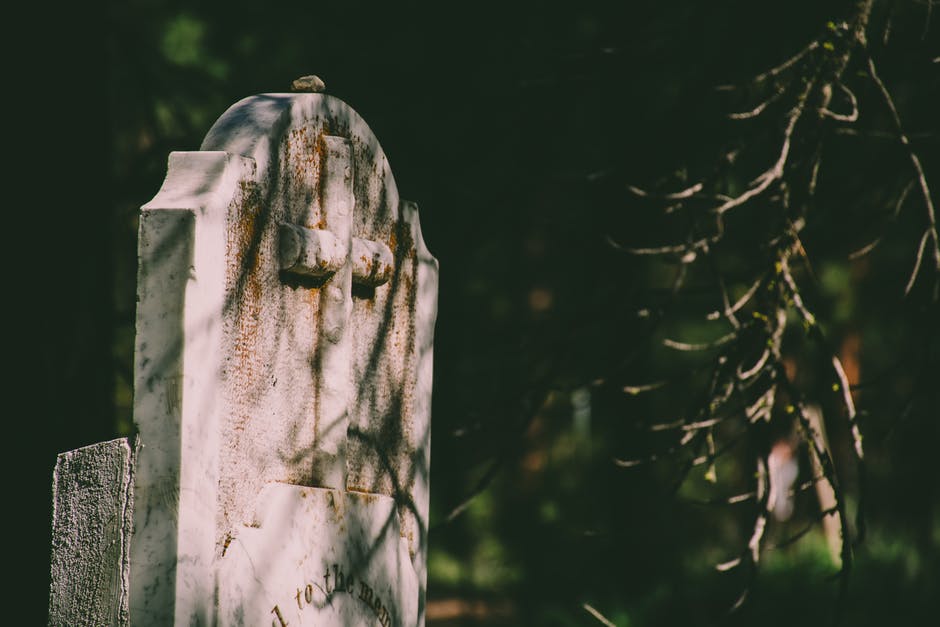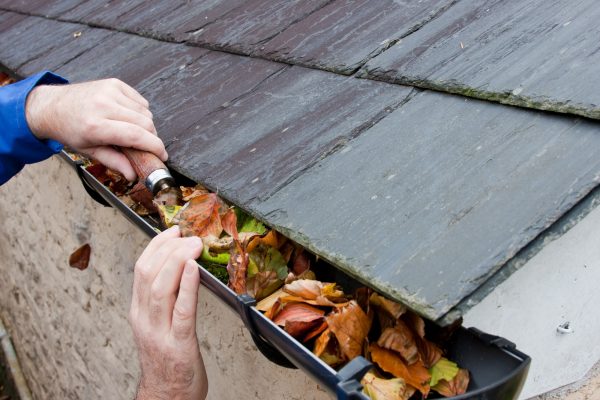When your loved one has passed, it’s the little things that make it easier to remember them.
Regular visits to the graveyard allow us to visit the resting place of those who were important in our life.
Apart from just leaving flowers, you can help to maintain the marker. Cleaning headstones helps to keep everything in top condition and helps keep the memory alive.
If you’ve ever wondered just how to go about cleaning up your loved one’s worldly reminder then you’re in luck. We’ve compiled some tips to help you ensure that the stone stays in tip-top shape.
1. Determine the Material
What the gravestone you’re cleaning is made out of will determine how you approach cleaning the stone itself. So, before you even begin thinking of cleaning up the plot, you’ll need to ensure you have the right tools.
The most common gravestone materials are still granite, bronze, and steel. Stainless steel, in particular, has become more common since its corrosion resistance and bright silver color allow it to stand out. Concrete is another of the common, relatively low maintenance materials used for headstones.
Less common, but still common enough to be of note are marble and other less hardy stones.
Metal headstones will require much different cleaning techniques than those made from stones.
If you’ve only gone so far as identifying the grave marker you’re planning on cleaning as “rock” then you need to check with someone who knows. Some approaches between granite and marble, for instance, can have drastically different end results.
2. Find a Professional for Any Damage
Unless the marker is quite recent, there’s a good chance that there is some fading, chipping, or other damage to the stone. It’s just the nature of the erosion of time, especially on something which is exposed to the elements through the full year.
Faded inscriptions are fairly common, especially when we’re talking about marble or bronze headstones. Fortunately, you can find a headstone cleaning service in most areas which will also offer any restoration.
Unless you’re a professional at working the material involved it’s a complete fool’s errand to try and fix any real damage yourself. At best it will be ineffectual, at worst you can easily destroy the marker or render it permanently unreadable.
This is one case where we recommend not going the DIY route, but there’s no need to shell out for regular cleaning as long as you’re careful once the stone has been restored.
3. Start Light When Cleaning Headstones
Even if the headstone has been unattended for quite some time it’s best to see what you can do with simple tools and mild detergents before you break out the big guns.
Oddly enough, dish soap often makes the best base before you get into specialized cleaners. A few drops of detergent in a considerable amount of water goes a long way and you’ll find it cuts through grime and dust quickly.
A sponge is your best bet, especially for headstones which have their letters engraved rather than raised in relief. The soft surface will let you get where the detergent is needed.
By starting light the first time you approach the marker you can avoid having to use unnecessarily harsh chemicals.
For particularly dirty headstones you may want to go for a nylon brush like you’d use on pots and pans. These have the extra advantage of doing some of the more detailed work you’d have to touch up later but shouldn’t be used unless you’re facing a really stubborn mess.
4. Oxidation Stains
Steel, bronze, and other metals used in the creation of a tombstone will have oxidation stains over time. It’s natural, but it can also be unsightly if the corrosion begins to build in one area.
There are two forms of oxidation: corrosion and patina.
Patina is actually protective over the surface of the metal. Since the surface metal has been oxidized it actually prevents rust and other damaging oxides from building up.
Don’t take off the patina, it prevents corrosion by forming a thin layer over the metal underneath.
On most iron patina will be black, while on bronze the patina will show up as the green color we associate with classical sculptures.
In both cases, however, there can be more than meets the eye. We’re all familiar with what rust looks like, for instance, but when it comes to copper-based metals like bronze things get a little bit tricker.
The easiest way to tell if a given stain is actually corrosion is to see if it’s powdery. Bronze corrosion, for instance, looks quite similar to a normal patina but it will be raised above the surface of the stone and leave a powdery residue on the hands.
Any major corrosion should be handled with an appropriate cleaner for the metal involved and checked at each cleaning thereafter, just don’t go crazy and polish the whole surface or you’ve just opened a new layer of atoms to the ravages of oxidation without a protective layer.
5. Use the Right Stone Cleaner
In an ideal world, a stone would be taken care of from the time it’s been set into the ground until the heat death of the universe.
That’s rarely the case in practice. If you’re coming back to a neglected marker which is made of stone you may need to use a professional stone cleaner before it’s in good shape.
There are specific cleaners made for marble, granite, and other stones. Make sure to use the right one for the best results.
Just as important: avoid experimenting on stone surfaces.
Marble, for instance, etches quite easily if you apply the wrong cleaner. On the other hand, granite will also take damage over time and if a cleaner is too acidic it can permanently stain and mar the surface of the stone.
6. Ditch the Sealant
Many people who are caring for a stone marker consider using sealants on them.
Don’t.
While they’re great for granite countertops in the home, sealants can have a long term effect on stones. While it would seem natural to simply seal off the surface of the stone from the elements it can cause massive failures in the future.
That means the headstone will break.
The reason for this is simple: headstones are constantly exposed to the elements. Often this happens both above and below ground. Capillary action in the porous stones brings water and minerals from beneath the surface, albeit on a microscopic level.
When you seal a headstone it traps all of the moisture and other components inside. This prevents the stone from ever really drying out and can even build enough pressure under the coating to eventually crack the stone entirely.
Oddly enough, a stone which has been cared for properly actually forms an outer crust which is harder than the initial structure of the stone so using a sealant is largely ineffectual in the first place when it comes to outdoor use.
7. Taking Care of Details
Detailing the inscription or relief on the stone can be quite frustrating depending on the type of stone and the level of neglect that’s happened before you get there.
Each headstone will have its own quirks, but if you’re truly willing to go the distance to make sure your loved one’s resting place remains pristine there are a few basic approaches which will make life much easier.
Once the stone has been initially cleaned many people have found that using isopropyl alcohol and q-tips is just about perfect. If the stone you’re cleaning has a ton of sharp corners then you may want to try using a cotton ball with a hard backing like a pen to really get in the corners.
Organic growth, like moss and lichen, can often be removed pretty simply by hand but some are much more resilient.
Stubborn lichen may require you to use a tool to get it off, but if you choose to scrape it make sure that your tool is softer than the stone.
For granite, this isn’t a problem, but something like a putty knife can gouge marble or sandstone pretty easily. In any case, using a harsh abrasive is a sure way to damage the headstone in the long run.
Using similar methods to those used on slate roofs is your best bet.
Mild and soft is your mantra. Headstones are meant to last for a long time, using harsh cleaning methods will cut down on that in the long run.
Maintaining Markers for Memorials
When it comes time to honor your loved one many people find the act of cleaning headstones meditative. It’s a great way to keep the memory alive and if you stay on top of it you’ll have minimal maintenance to take care of over the years.
Remember that the mildest method you can use is always the best. Headstones are made to last the test of time, you’re just helping things out by keeping a clean surface.
And… when in doubt about damage or stains, get professional help to make sure that no damage is done.
So, grab a bucket and some dish soap and head out. Maintaining headstones is easier than you ever could have imagined.





